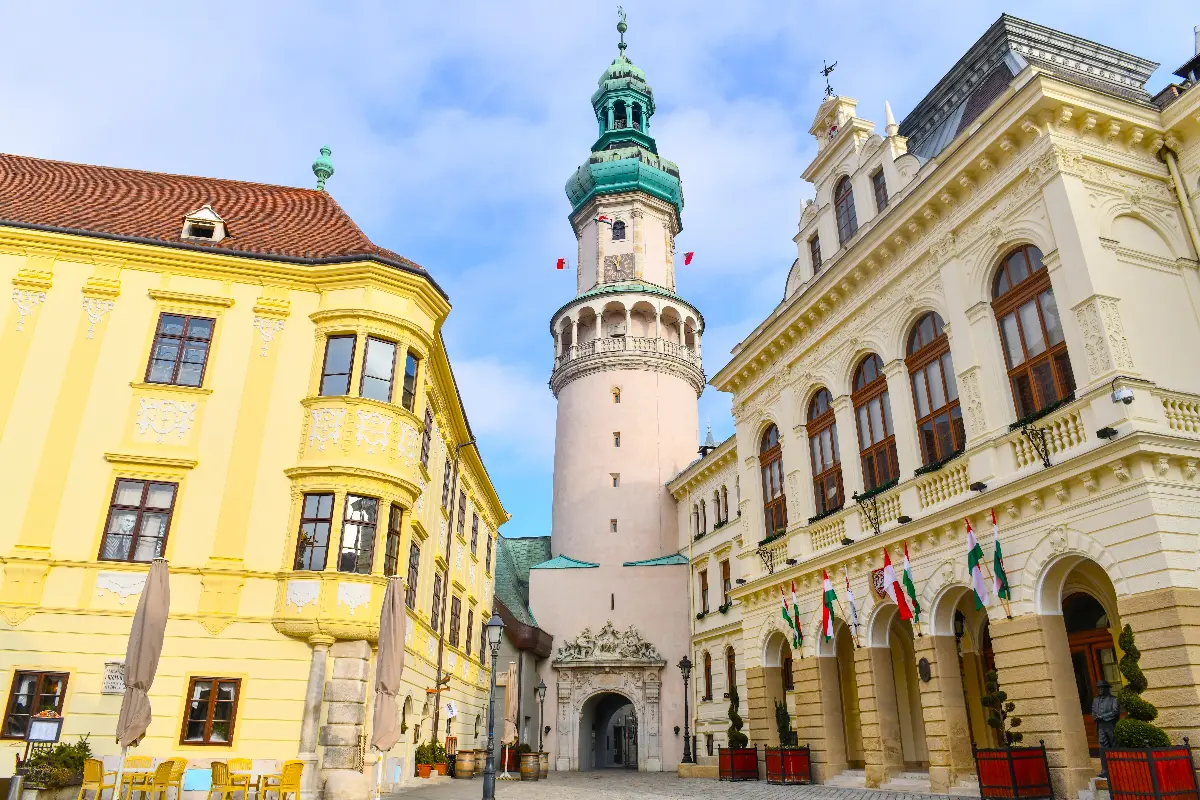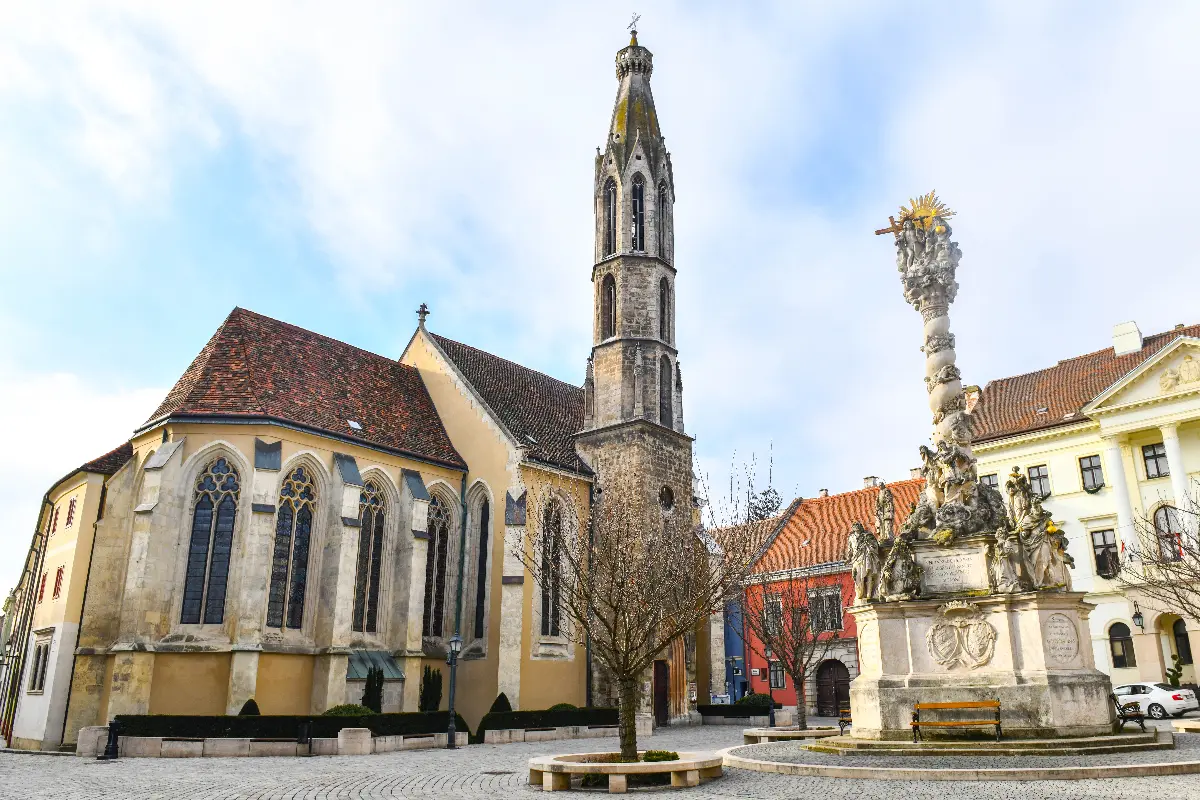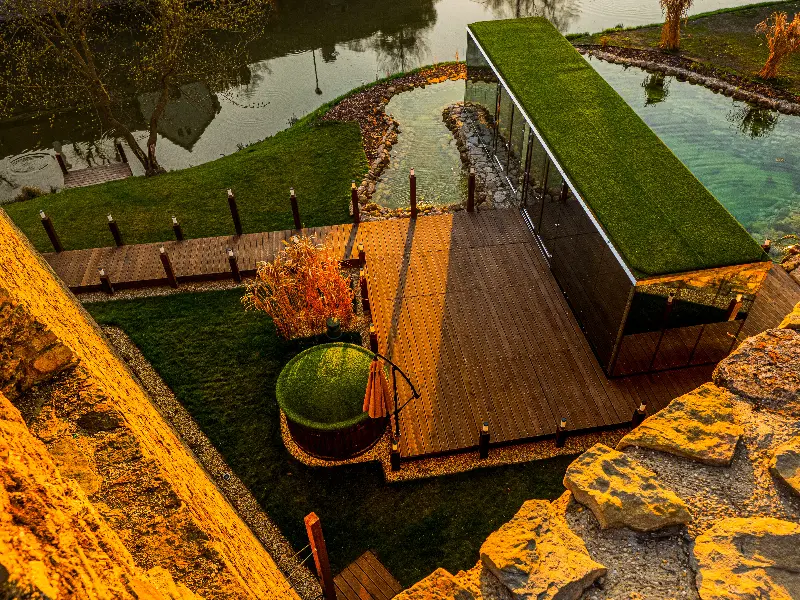
Helyszín címkék:
Go around the centre of Sopron as never before - through narrow alleys, a Roman walk!
Käesz Judit
The street system of downtown in Sopron is defined by the town wall: the triple wall ring is the result of constructions for centuries. It is unique in Hungary, as it has been standing for 1700 years, defining the centre of Sopron and the image of the outer side of the castle wall, the Castle District. Walkingon this Castle Wall Promenade established in a former moat, we feel as if we are on a trip through time that takes us back to Roman times. The trail of the town wall, the semicircular little rondelles also remained to us from here. After the fall of the Roman Empire, the city became depopulated, but the ruins of the town walls kept towering here. The triple city wall, which can still be seen, was built in the late 13th and first half of the 14th century. In the first half of the 17th century, several rondelles were added to the medieval town wall, of which only the Great (St. George) rondelle remained. After the Turkish threat, the castle wall lost its military significance and the moat was filled.

On the plots parcelled out in the place of the moats, the richer people built residential palaces, the less affluent ones built narrow residential buildings, thanks to which the really varied street view of the inner houses in the Castle District can be seen today. The buildings of the outer row of houses are older, many of them has a medieval origin. The Castle Wall Promenade itself starts from Bünker passage, from where you can walk behind Színház (Theatre) street through the houses built in the classicist and romantic style all the way to the courtyard of Megyeháza (Courthouse), and from there to the reinforced concrete gate leading to Main Square. Looking up from the promenade behind Színház street, you can see the windows of the Fabricius-house and next to it the medieval residential tower in the General House.

From here we get to the Front gate and then the ruin garden, which presents the remains of the Roman era. Passing the bastion, we can walk further behind the Castle District, and finally we get behind the houses of Szent György Street, from where we arrive at the Back Gate, which is the end of the promenade. The promenade, which is somewhere narrower and somewhere wider, also served to protect the Firewatch Tower between the 14th and 17th centuries. So do not miss the Firewatch Tower from the walk, because besides the number one symbol of the town is also based on Roman foundations, its cylindrical part is medieval, its balcony and clock tower are Renaissance, its dome is Baroque. The Loyalty Gate leads through it, which frames the 2000-year old history of the town centre.

From the top of the Firewatch Tower there is a magnificent view of the town - Sopron is literally at our feet. It is also worth going up to the watchtower, from where the guards watched the countryside, drawing attention to the arrival of foreign soldiers or foreign wine carts. In the Castle District, if we start in the direction of the Small Castle District in a medieval alley, we find ourselves in the Festőköz (Painter alleyway). It got its name from the indigo dyers who were carrying their linens here to the attic of the dying house that once stood here. One of the oldest buildings in Festőköz is the Rejpál House, and if we walk across it, we get to Rózsa (Rose) Street via the bridge of the Ikva stream, where we can find many buildings of medieval origin. On one of them we can even see the sign how high the flooded Ikva was in the 18-19th century.

This downtown walk can be done in a comfortable hour, but it’s worth stopping by and taking a closer look at the buildings, museums we pass by. Today, in the ancient houses of the Castle District shops, cafés and restaurants line up, and with the museums of the Main Square and the cosy houses of the surrounding narrow streets in downtown, we feel as if we have not been to Sopron, but to a small Mediterranean town.









